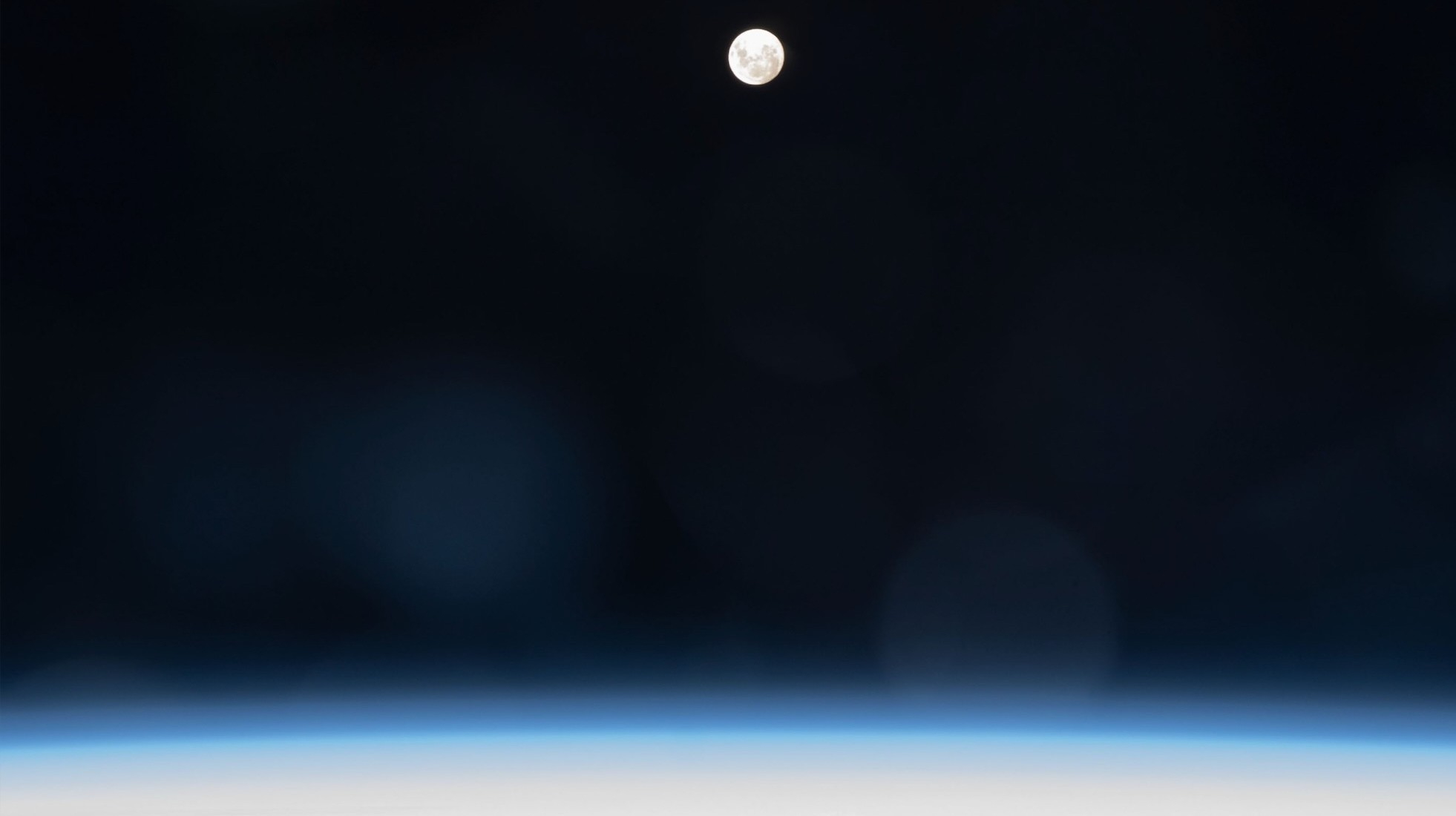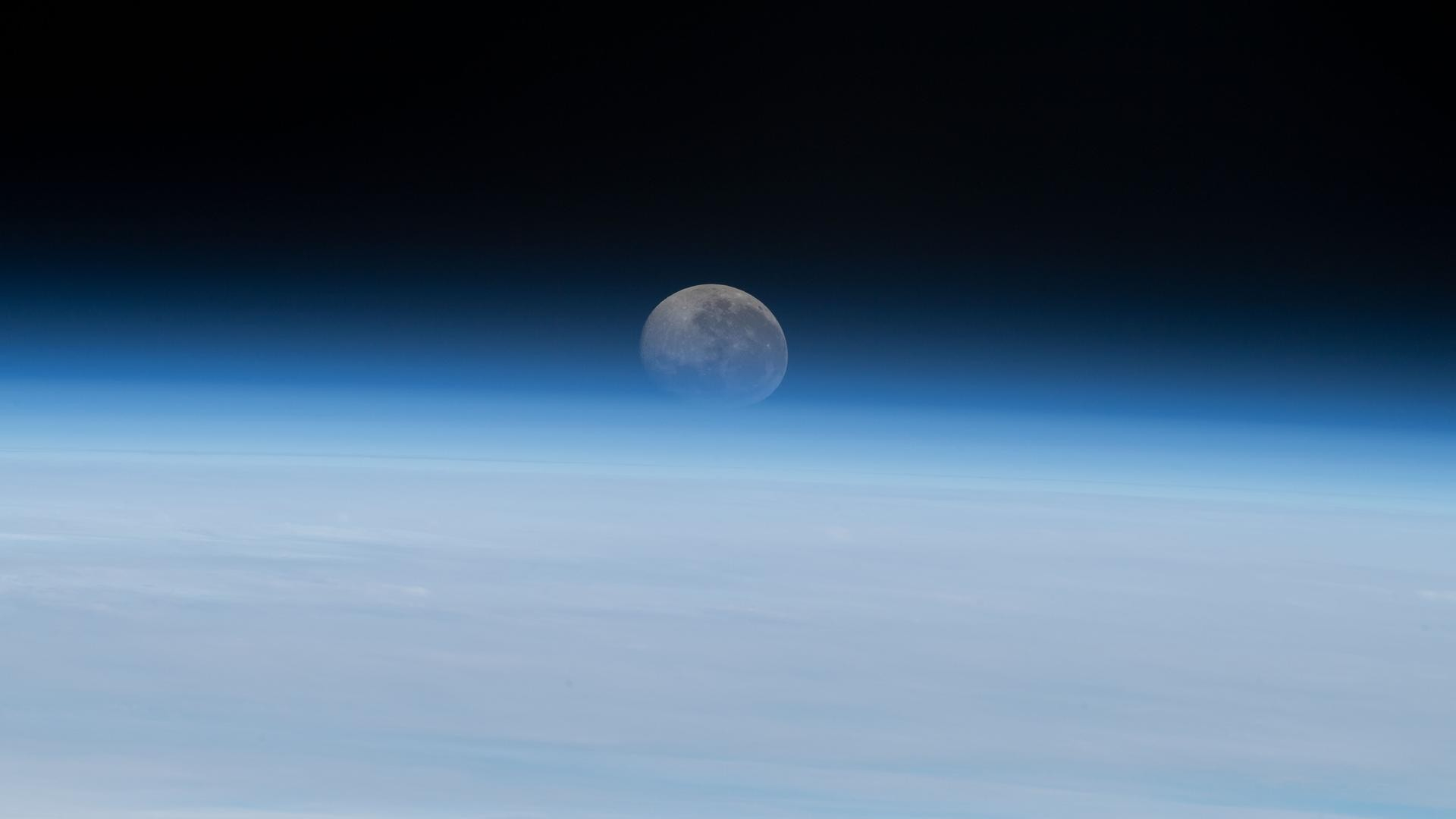Astronaut shares stunning view of July's supermoon from space (photo)
The July full moon was the first of four straight 'supermoons.'

Astronauts aboard the International Space Station (ISS) had a great view of this month's full moon.
July's full moon — the first of four straight supermoons over the next few months — rose at 7:10 p.m. EDT (2310 GMT) on Monday (July 3) in New York and set at 4:33 a.m. EDT (0833 GMT) on Tuesday (July 4). Astronaut Sultan Al Neyadi of the United Arab Emirates (UAE) shared stunning photos of the full moon, also known as the Buck Moon, from his vantage point on the orbiting lab.
"Gazing at the full moon from the ISS," Al Neyadi tweeted on Wednesday (July 5). "Even though we are up here in space, we are still quite the distance away from the moon."

On Monday, the full moon was at its closest distance to Earth in its elliptical, roughly 27-day orbit (called perigee), causing it to appear larger and brighter in the night sky than usual when viewed from Earth. When this happens, the full moon is called a supermoon, and there are three more set to occur this year.
Supermoons can lead to a 30% brightening of the moon and a 14% increase in the lunar disk as seen from Earth. However, these increases in brightness and apparent size aren't usually noticeable to the unaided eye.
"We are at an altitude of around 400 km [249 miles] from Earth while the average distance between Earth and the moon is around 384,000 km [238,607 miles]," Al Neyadi said in the tweet. By comparison, Monday's supermoon was just 224,895 miles (361,934 km) from Earth.
Get the Space.com Newsletter
Breaking space news, the latest updates on rocket launches, skywatching events and more!

Looking for a telescope to see this summer's four supermoons up close? We recommend the Celestron Astro Fi 102 as the top pick in our best beginner's telescope guide.
The next three full moons will be supermoons as well. The next one, called the Full Sturgeon Moon, will rise on Aug. 1, followed by another one on Aug. 30, which is considered a blue moon, as it will be the second in the same month. Then, a full moon on Sept. 23, called the Full Corn Moon, will close out this year's supermoon season.
If you're hoping to catch a look at one of the summer's supermoons, our guides to the best telescopes and best binoculars are a great place to start. If you're looking to snap photos of a full moon or other night sky objects, check out our guide on how to photograph the moon, as well as our best cameras for astrophotography and best lenses for astrophotography.
Editor's Note: If you snap an image of a supermoon, and would like to share it with Space.com's readers, send your photo(s), comments, and your name and location to spacephotos@space.com.
Join our Space Forums to keep talking space on the latest missions, night sky and more! And if you have a news tip, correction or comment, let us know at: community@space.com.

Samantha Mathewson joined Space.com as an intern in the summer of 2016. She received a B.A. in Journalism and Environmental Science at the University of New Haven, in Connecticut. Previously, her work has been published in Nature World News. When not writing or reading about science, Samantha enjoys traveling to new places and taking photos! You can follow her on Twitter @Sam_Ashley13.
